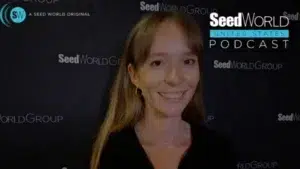Food production relies heavily on a small variety of crops, including rice, maize and cereals. Even though agriculture and livestock production are large-scale and more specialized, there are limited high-yield breeds and varieties being used. Agriculture and the forests would benefit from more genetic diversity with the threats of climate change, biodiversity being lost, pests and diseases. In Wageningen, scientists, breeders, forest managers, NGOs and policymakers came together to discuss their insights on the issue of genetic diversity according to a release.
“Biodiversity for food and agriculture is caving in,” said Irene Hoffmann, secretary of the FAO Commission on Genetic Resources for Food and Agriculture. “Species are disappearing, ecosystems are degrading, genetic diversity within species, both within wild species and the domesticated species we use, is declining. Our landscape is becoming increasingly uniform, endemic species are being supplanted by exotics, and pesticides are polluting soil and water. This makes our food production vulnerable to diseases, pests and climate change.”
“To secure genetic diversity for future use, we should not just store it in gene banks,” said Sipke Joost Hiemstra, head of the CGN. “If you want the unique characteristics of crops, trees and animal breeds to persist, you also have to continue to use and actively exploit them in today’s agriculture and forestry.”
Biodiverstiy-friendly practices in agriculture and livestock production are increasing and change is happening at the policy level. The Kunming-Montreal Global Biodiversity Framework (GBF) has 14 targets linked to agri-food sectors. Another policy example is the FAO’s Framework for Action on Biodiversity for Food and Agriculture, with associated Global Plans of Action for plants, animals, trees and aquaculture species.
“However, a lot still needs to be done,” said Hoffmann. “Achieving all those action plans and goals requires innovation and cooperation on a global, but also local scale. In doing so, good and practical agreements must be made so that yields from the use of genetic resources are shared equitably worldwide and so that biodiversity can be preserved.”
Rutger Groot is the chairman of the Knowledge Transfer Foundation of East West Seed. Groot discussed their work with breeding food crops and making that seed available to farmers, with an emphasis on tropical countries. Better seed helps to improve crop yields and increase food security. East West Seed also preserves the improved seeds in their own gene bank while also collaborating with public gene banks.
“With global nutrition security and climate change urgently needing accelerated plant breeding, quick and easy access to genetic resources is required,” said Groot. “The tricky thing is though, that the regulation around access and benefit sharing creates many practical barriers for commercial plant breeders. It is almost impossible to keep checking the provenance and permissions of every seed every time you re-use it in something. It causes huge delays, and we don’t have that time.”
By protecting native trees, the field of forestry is trying to conserve and manage genetic resources. Planting more trees is one of the best ways to do this. “We face a big task, because the Netherlands is one of the worst kids in the class when it comes to protecting habitats and species,” said Hank Bartelink, director of LandschappenNL. “We need to plant more than 160 million trees to start meeting the goals of CO2 sequestration and natural cover in the Netherlands.”
What kind of planting material is the most suitable? “This is where the List of Varieties of Trees comes in handy. It shows you exactly which tree species suits your purpose and where the plant material comes from. We need to make our forests stronger for the future and there should be more focus on knowledge transfer to forest managers,” said Bartelink. The list includes native tree species and tree species that will be critical to adapt to climate change.
Over 150 people from different countries, organizations and sectors visited Wageningen to participate and discuss genetic resources. “The active and enthusiastic participation in the workshops shows how important the topic is to people. We have picked up many new ideas and received plenty of feedback on our CGN strategy. I am very happy with the positive feedback from everyone who contributed to this event,” said Hiemstra.











